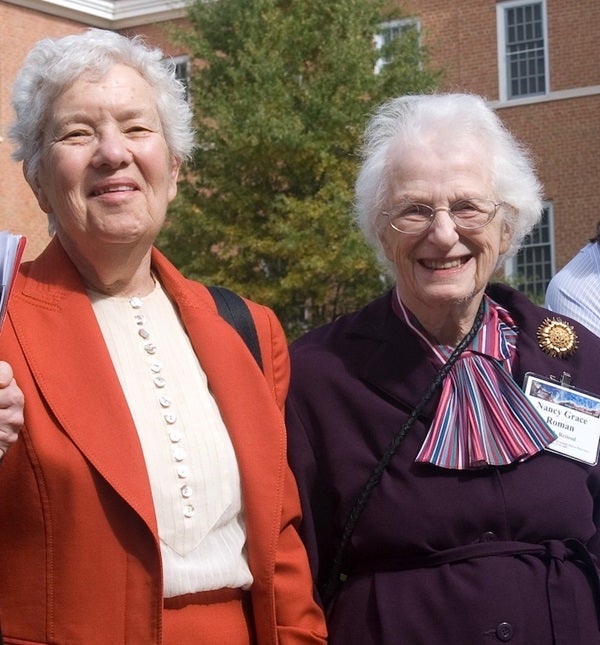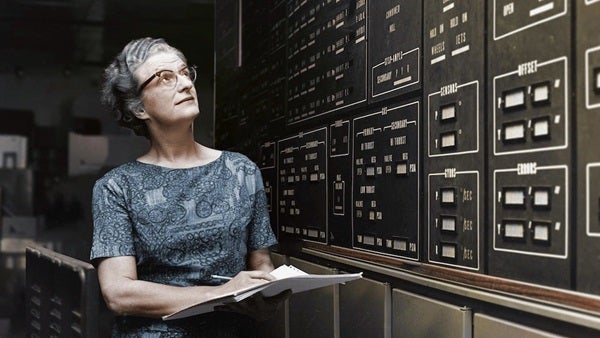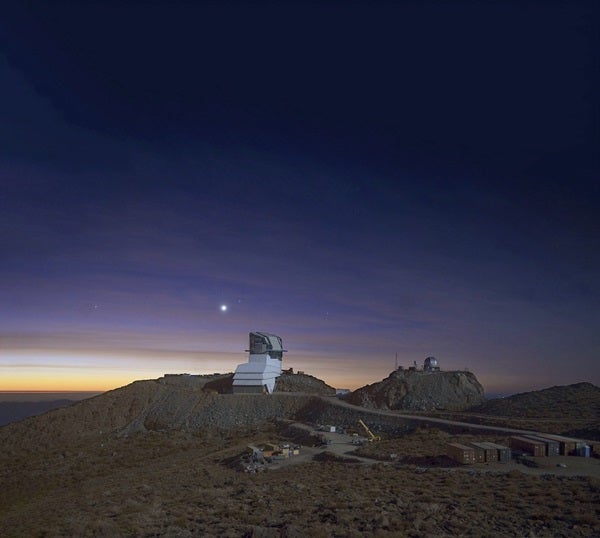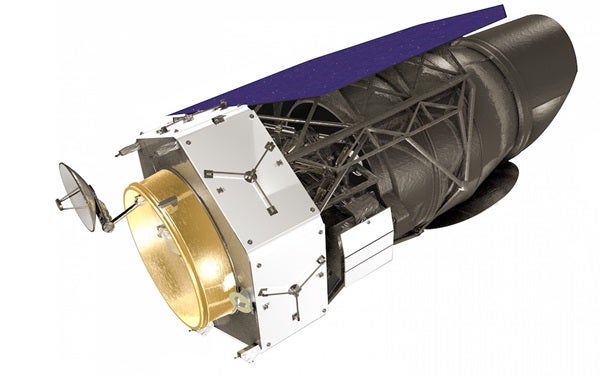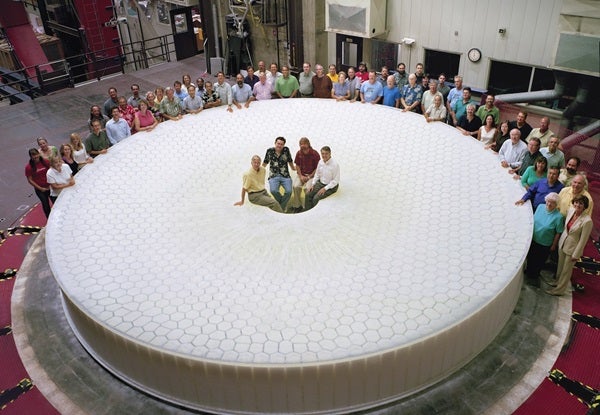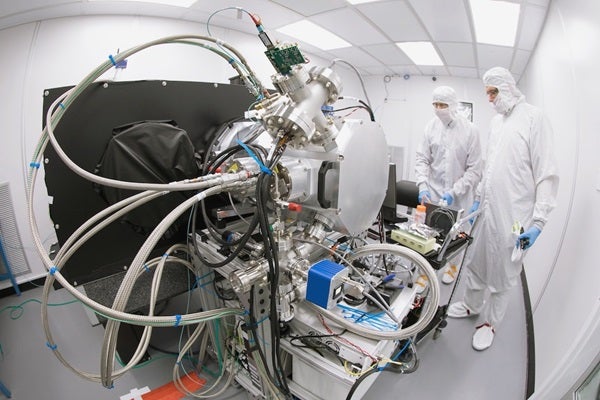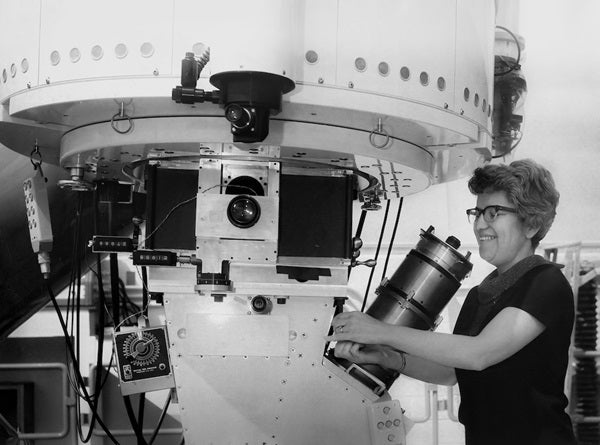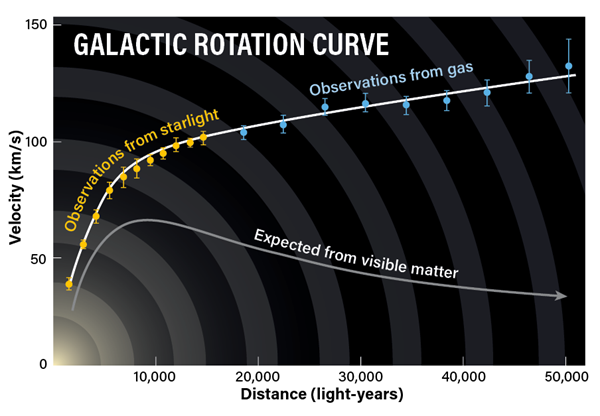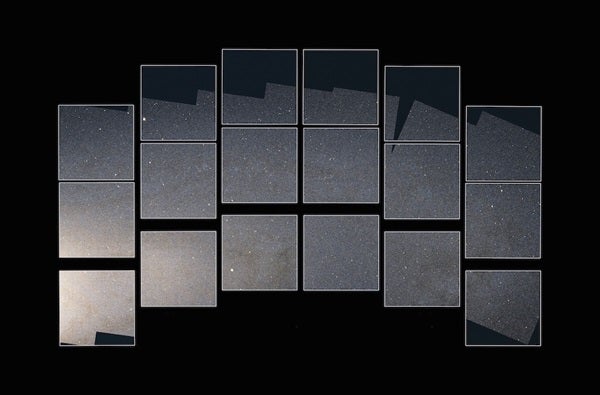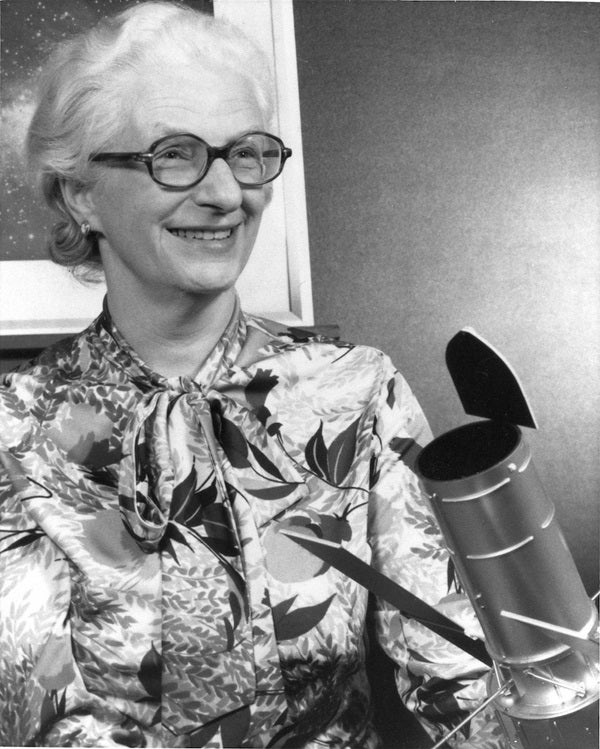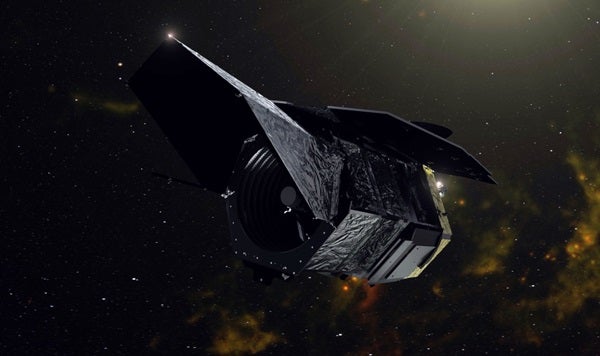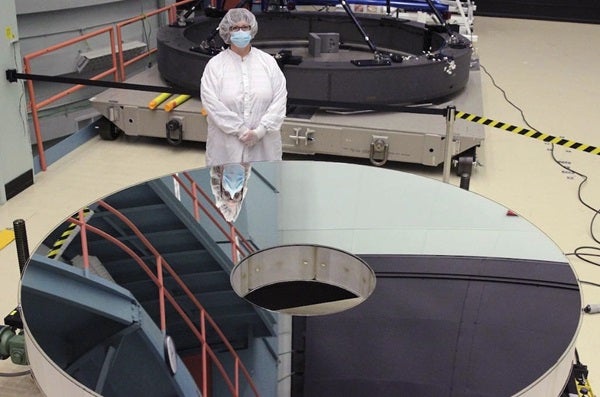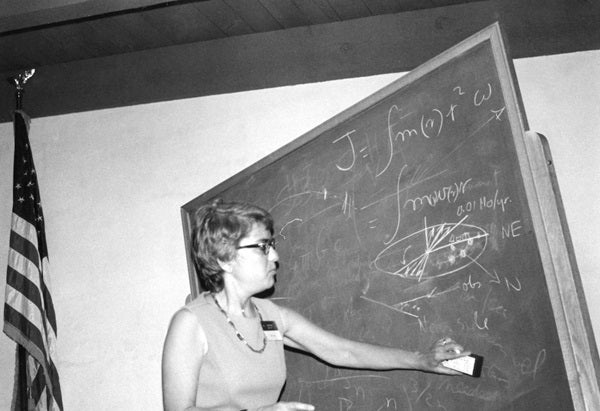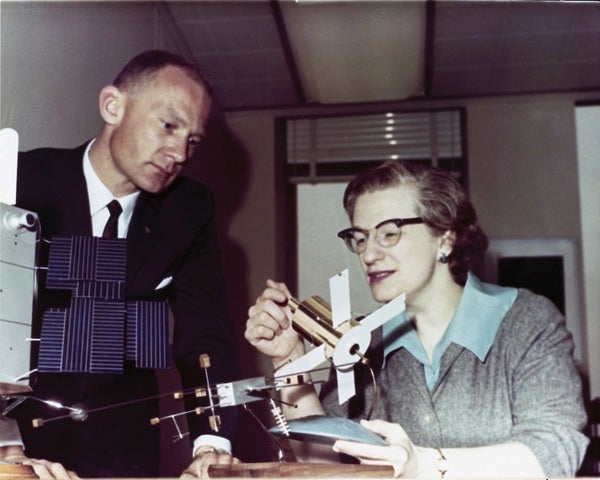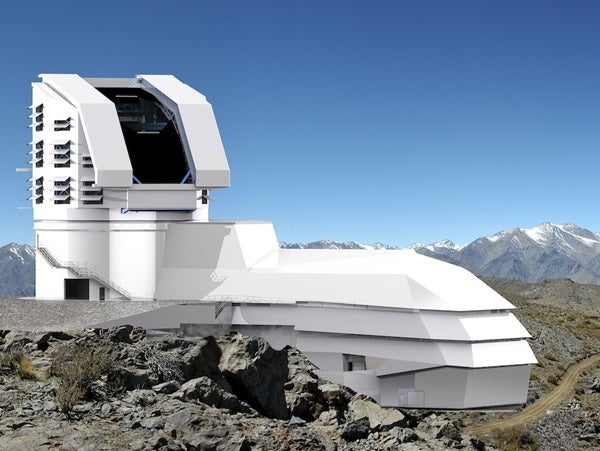Changing your name is not a decision to be taken lightly. So when two of the most powerful and revolutionary upcoming astronomical observatories were renamed, people took notice.
Say goodbye to the Large Synoptic Survey Telescope and the Wide Field Infrared Survey Telescope, and say hello to the Vera C. Rubin Observatory and the Nancy Grace Roman Space Telescope. Recently rechristened from acronyms — LSST and WFIRST, respectively — to human names, these observatories are expected to become two of the decade’s most powerful survey tools. Together they will probe dark matter, dark energy, exoplanets, asteroids, fleeting celestial phenomena, and the evolution of our universe.
But their renaming reflects another revolution in science that is long overdue. Scientists are finally paying tribute to female pioneers of astronomy by naming important observatories after them.
Both namesake women were towering figures in their respective fields of study. Vera C. Rubin produced compelling evidence of dark matter, ushering in what The New York Times called a “Copernican-scale change” in cosmology. Nancy Grace Roman’s research led to fundamental insights about our galaxy’s structure. As NASA’s first chief of astronomy, Roman also became known as the “mother” of the Hubble Space Telescope and was a prime driver behind numerous other space observatories.
Like Rubin and Roman’s biographies, both observatories are packed with superlatives. The Rubin Observatory, expected to finish construction in December and achieve full operation in late 2024, features the world’s first 3.2-billion-pixel digital camera. Its 8.4-meter Simonyi Survey Telescope’s design is so unique that it garnered $40 million in private funding, principally from Microsoft gurus Charles Simonyi and Bill Gates, long before federal funding kicked in for the rest of the project.
The Roman Space Telescope, for its part, packs the same brilliant sub-arcsecond resolution as Hubble, but covers a field of view 100 times greater and can switch targets much more quickly. Its focus on near-infrared wavelengths allows it to penetrate dust and gas beyond Hubble’s vision. Following Earth from afar while sharing its orbit around the Sun, Roman will be up to 1,000 times more efficient than Hubble as a survey telescope.
The massive amount of data produced by both observatories will require specialized algorithms and, for Rubin, dedicated processing centers to handle the deluge of new information. If all goes as planned, the two observatories will play key roles in advancing the field of astronomy — contributions fitting of their namesakes, who did the same in their lifetimes.
Shedding light on dark matter
Dark matter was first postulated in 1933 by Swiss astronomer Fritz Zwicky when he found that the galaxies of the Coma Cluster were moving too fast for the group to stick together based on the visible content of its galaxies. His idea was controversial: Without what he called dunkle Materie, or dark matter, only a change in the laws of physics could explain how our universe holds itself together.
Four decades later, Rubin came to the topic while seeking safe harbor from the controversy and “competitive atmosphere,” as she called it, of her previous work on the distributions and motions of galaxies. She and instrumentalist Kent Ford — who developed the specialized spectrograph central to her research — published seminal papers on the rotation curves of spiral galaxies. Rubin found that stars orbiting at the outskirts of galaxies were moving inexplicably fast. In other words, the galaxies’ rotation curves were flat.
Physics dictates that the farther from a concentration of mass something orbits, the weaker the gravitational force it experiences and the slower it moves. Based on the amount of visible matter in the outskirts of these galaxies, which dropped off with distance, the stars should be orbiting more slowly. But as Rubin looked to a galaxy’s fringes, she found that stars kept up their speed, as if under the influence of the gravitational pull of some unseen matter.
Rubin’s measurements were compelling evidence that some invisible material — Zwicky’s dunkle Materie — resided within and around galaxies. Dark matter and the equally mysterious dark energy — the presumed explanation for the universe’s accelerating expansion — are now thought to account for 95 percent of the known universe (25 percent dark matter, 70 percent dark energy).
“We became astronomers thinking we were studying the universe,” Rubin later said of the ramifications of her game-changing discovery, “and now we learn that we are just studying the five or 10 percent that is luminous.”
The Rubin Observatory
The Rubin Observatory, nearing completion atop Cerro Pachón in Chile, may help astronomers probe the other 95 percent.
The telescope’s mammoth digital camera — which, at the size of a small SUV, is the world’s largest — weighs several tons and comprises 189 ultra-precise CCD detectors of 16 megapixels each, grouped in clusters of nine. It employs three lenses, the largest of which is 5 feet (1.5 m) in diameter, principally to correct chromatic aberration, and six filters to capture the entire visible spectrum (plus a touch of infrared and ultraviolet light).
The telescope’s mirror also breaks new ground: It features a tertiary embedded within the primary, fabricated as a single casting to maximize internal stability and minimize weight. This integrated mirror system allows the telescope to slew to new sky positions in just five seconds, meaning the observatory can survey the entire Southern Hemisphere sky down to 24th magnitude every three days.
The resulting data flow will be unprecedented for a single astronomical instrument. Each night, it will generate 20 terabytes of data and issue some 10 million alerts of any changes it detects in the sky, mostly asteroids. Every alert will be processed and broadcast worldwide in less than 60 seconds.
During its 10-year Legacy Survey of Space and Time (which now uses the acronym LSST), Rubin’s dedicated computers will catalog some 20 billion galaxies and a similar number of stars, as well as several million new supernovae and about 6 million asteroids. By then, the observatory will have surveyed every part of the southern sky more than 800 times, producing several hundred thousand terabytes of data. In doing so, the Rubin Observatory may open the door to understanding dark matter using a phenomenon called gravitational lensing.
Based on Einstein’s theory of general relativity, massive objects act as lenses by bending and amplifying light as it travels near them. By observing how galaxy clusters affect the light from more distant objects behind them, such as galaxies and bright quasars, astronomers can calculate the total mass of the cluster. Comparing this to the mass of the clusters’ visible matter reveals how much invisible dark matter is hiding within them.
Shaping NASA astronomy
While Rubin looked at galaxies, Roman focused on the characteristics of stars within the Milky Way. Her seminal 1950 Astrophysical Journal paper on stellar ages and star formation redefined the structure of our galaxy.
Because younger stars are born of the expelled nuclear remnants of older stars, they contain more complex elements than their forebears. Astronomers call anything heavier than helium and hydrogen (the two lightest elements, which primarily fuel stars) a metal. Thus, older stars have lower metallicity, or metal content, than younger stars. Analyzing and characterizing starlight, Roman found that older, redder stars have slower, more elliptical, and more highly inclined orbits around the galactic center than younger, bluer, faster-moving stars, which follow circular orbits and hug the galactic plane as they form.
In 1956, this research elicited an invitation to the opening of the Byurakan Observatory in Armenia in the Soviet Union. With only three Americans attending, this brought Roman notice back home. And just a year later, the Russians launched Sputnik. The space race was on and, in 1959, Roman joined the newly formed NASA Office of Space Science.
“The chance to start with a clean slate to map out a program that I thought would influence astronomy for fifty years was more than I could resist,” Roman wrote in an autobiography published in Annual Review of Astronomy and Astrophysics shortly after her death.
As a NASA administrator, Roman ended her research career but led the way on several orbiting space observatories in the ensuing years. And under her fierce leadership and lobbying, the Hubble Space Telescope survived countless assaults and setbacks, earning her nickname as the mother of Hubble. But in her time at NASA, Roman’s endeavors set the stage for many other projects as well, including the Chandra X-ray Observatory and the Spitzer Space Telescope.
The Roman Space Telescope
Planned to launch in the late 2020s, Roman’s namesake space-based telescope will focus on near-infrared wavelengths across both hemispheres of the sky. Its 2.4-meter mirror, similar in size to Hubble’s, will have a 300-megapixel camera capable of achieving 0.1-arcsecond resolution across the telescope’s massive 0.28-square-degree field of view. Roman will produce 1.3 terabytes of data each day from its roughly elliptical orbit around the second Lagrange point in Earth’s orbit — one of five gravitationally stable points in the Earth-Sun system.
The telescope will also carry an innovative coronagraph capable of blocking the overpowering light of distant target stars to spot the dim, otherwise invisible exoplanets around them. This coronagraph will use two medal-sized mirrors, each with 2,000 tiny pistons making constant adjustments to keep their surfaces within specs. Engineers expect the instrument to be 1,000 times more sensitive than existing coronagraphs, able to detect exoplanets between 20 million and 1 billion times fainter than their host star, as long as they appear more than 0.15″ apart on the sky. That’s akin to detecting a firefly hovering near a lighthouse from 1,000 miles (1,600 kilometers) away.
Facing barriers
Female scientists have long faced adversity. Like their counterparts in other disciplines, women in astronomy have endured discrimination, gross pay inequities, ridicule, and the indignity of seeing their own research garner accolades for male colleagues. Nonetheless, Rubin and Roman pressed on in a field that was rife with sexism before the term had even been coined. (According to Merriam-Webster, the first known use of sexism with its current definition was in 1963.)
Rubin’s parents nurtured her early interests in astronomy and music. Her father, an electrical engineer, helped her build her own telescope in her teens. Roman’s father, a geophysicist, likewise encouraged his daughter’s passion for astronomy and math, while her mother stoked Roman’s imagination with nighttime walks to marvel at the northern lights and constellations.
After high school, the realities of male-dominated science began to encroach for both. Born in 1925 (three years before Rubin), Roman applied to college first and was accepted at Swarthmore College. Upon failing to convince Roman not to major in science, the college’s dean of women had nothing more to do with her for the next four years, Roman wrote.
Rubin later applied to study astronomy at the same school, but they declined her application and suggested she find a more ladylike career. She went instead to Vassar College in 1945, where Maria Mitchell, America’s first female astronomer, had taught 75 years earlier. Rubin aced her classes and graduated a year early, marrying straight out of school.
She applied to Princeton University next, but they summarily rejected her — it would be decades before they admitted any woman at all. In 1948, Rubin and her husband, Robert, went instead to Cornell University, where he worked toward his Ph.D. while she pursued a master’s degree.
After two years of study, Rubin’s final thesis on the velocity distribution of galaxies was so impressive that her department chair, William Shaw, offered to present it at an upcoming annual astronomy conference. But that offer came with one major condition. Rubin, pregnant with her first child and due shortly before the conference, couldn’t possibly go, he said. So, Shaw would present the research under his name, not hers. She declined his “offer” and instead attended herself. The morning after her presentation, The Washington Post front page bore the headline “Young Mother Finds Center of Creation.”
In 1951, the Rubins left Cornell for Washington, D.C., where Robert took a position at the Johns Hopkins Applied Physics Laboratory (APL). Within a year, it was clear that his wife desperately missed her research, so Robert encouraged her to pursue a Ph.D. at Georgetown University. While pregnant with their second child, Rubin was soon rubbing shoulders with prominent scientists again. After long days at APL, Robert would drive her to Georgetown for evening classes. He would then park outside and wait, eating his supper in their car.
Roman, meanwhile, graduated from Swarthmore in 1946 and went to the University of Chicago to earn a Ph.D. When she first met the professor who would become her thesis advisor, William Morgan, he told her to go to his house to change the bed since his wife was sick. Stunned, she complied. Roman soon discovered that most of the professors considered educating women a waste of time, since they were all destined to marry and become homemakers.
Morgan rarely met with her and went six months without acknowledging the simplest greeting, Roman wrote. He was willing, on the other hand, to abscond with her research and present it as his own at a prestigious Vatican conference. On the night before her final oral exam, Morgan agreed to meet, but scheduled their session at midnight. “He decided to use it as an occasion for petting,” she wrote. “I moved his hand several times, trying to go on with our conversation.”
After earning her Ph.D. in 1949, Roman stayed on at Yerkes Observatory another six years as a researcher and instructor, but with much lower pay than her male colleagues. The department chairman, Nobel laureate Subrahmanyan Chandrasekhar, explained to her: “We don’t discriminate against women — we can just get them for less.”
Opening new frontiers
Despite these ongoing hardships, Rubin and Roman pressed on. They began to make names for themselves and, as it turned out, for two future telescopes.
After earning her Ph.D. in 1954, Rubin went on to become Georgetown faculty. She later moved to the Carnegie Institution in Washington, diving into research on galaxies that led to her groundbreaking discovery of dark matter.
Roman moved from Yerkes to spend three and a half years at the U.S. Naval Research Laboratory, acquainting herself with the relatively new field of radio astronomy before taking the administrative position at NASA. There, Roman won her colleagues’ respect as she relentlessly fought to give astronomers the tools they needed to probe the cosmos.
And astronomers anticipate the Rubin Observatory and Roman Space Telescope, like their namesakes, will make groundbreaking discoveries about our universe.
Each telescope will provide both wide-angle and pinpoint clarity in every image, and both are principally survey telescopes designed to create a catalog of sky objects and phenomena at unprecedented scales. They will each make much of their data available worldwide, free and in real time.
“I think we’re entering a new paradigm of astronomical instant gratification,” Nobel laureate Adam Riess of Johns Hopkins University recently said in an online webinar. Unlike the previously established method of discovering a few interesting objects and then spending months or years to requesting more time to observe them, he says, “to me, it’s very exciting as a scientist that we’re going to be able to dive right into everything we see without waiting.”
That “we” includes the steadily increasing ranks of women in astronomy. As director of undergraduate studies and the first female professor in Princeton’s astronomy department (where Rubin was long ago denied admission), astrophysicist Neta Bahcall is optimistic the trend will continue. Bahcall knew both women well; she was close friends with Rubin until her death in 2016.
In December 2020, the observatory unveiled its official logo (upper right). Its colors and design reflect the observatory’s physical appearance and scientific mission.
“My main advice to young women in science is don’t pay attention to the negative comments you get. Just do what you enjoy and what you’re good at. Be resilient and persevere,” she says.
“Nancy was tough as nails, and that’s why she succeeded at NASA in getting things done,” Bahcall says. “Vera just loved doing her science — taking data, looking at it herself and analyzing it. [She] always told me she wanted to find research that not that many people were working on. That’s what she found most comfortable, not competing with everybody else.”
Rubin said herself in a 1990 Discover magazine interview: “Fame is fleeting. My numbers mean more to me than my name. If astronomers are still using my data years from now, that’s my greatest compliment.”
Two of the decade’s most powerful new telescopes will soon celebrate that spirit, showing just how far science has come in the past century, thanks to its extraordinary women.

